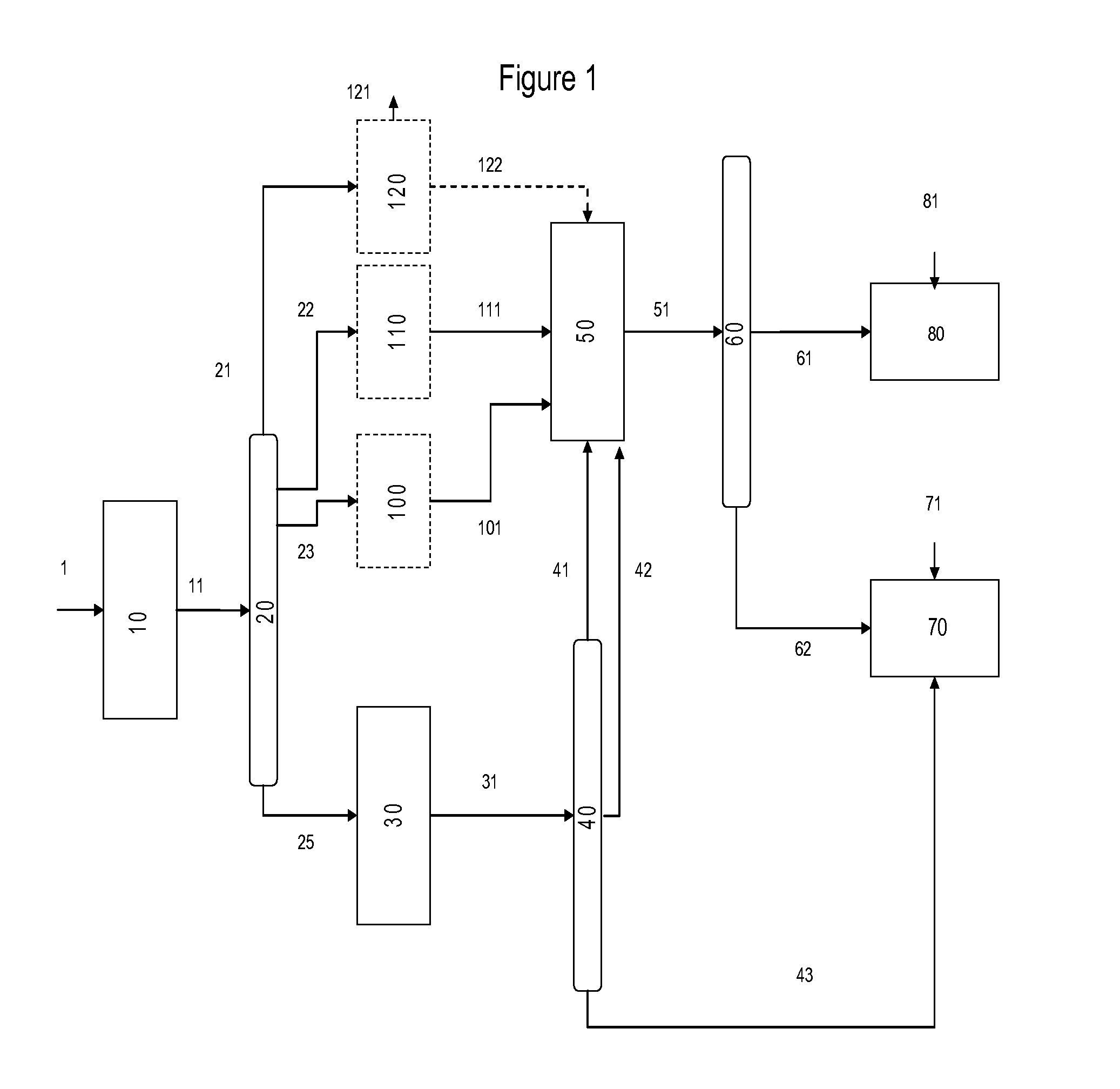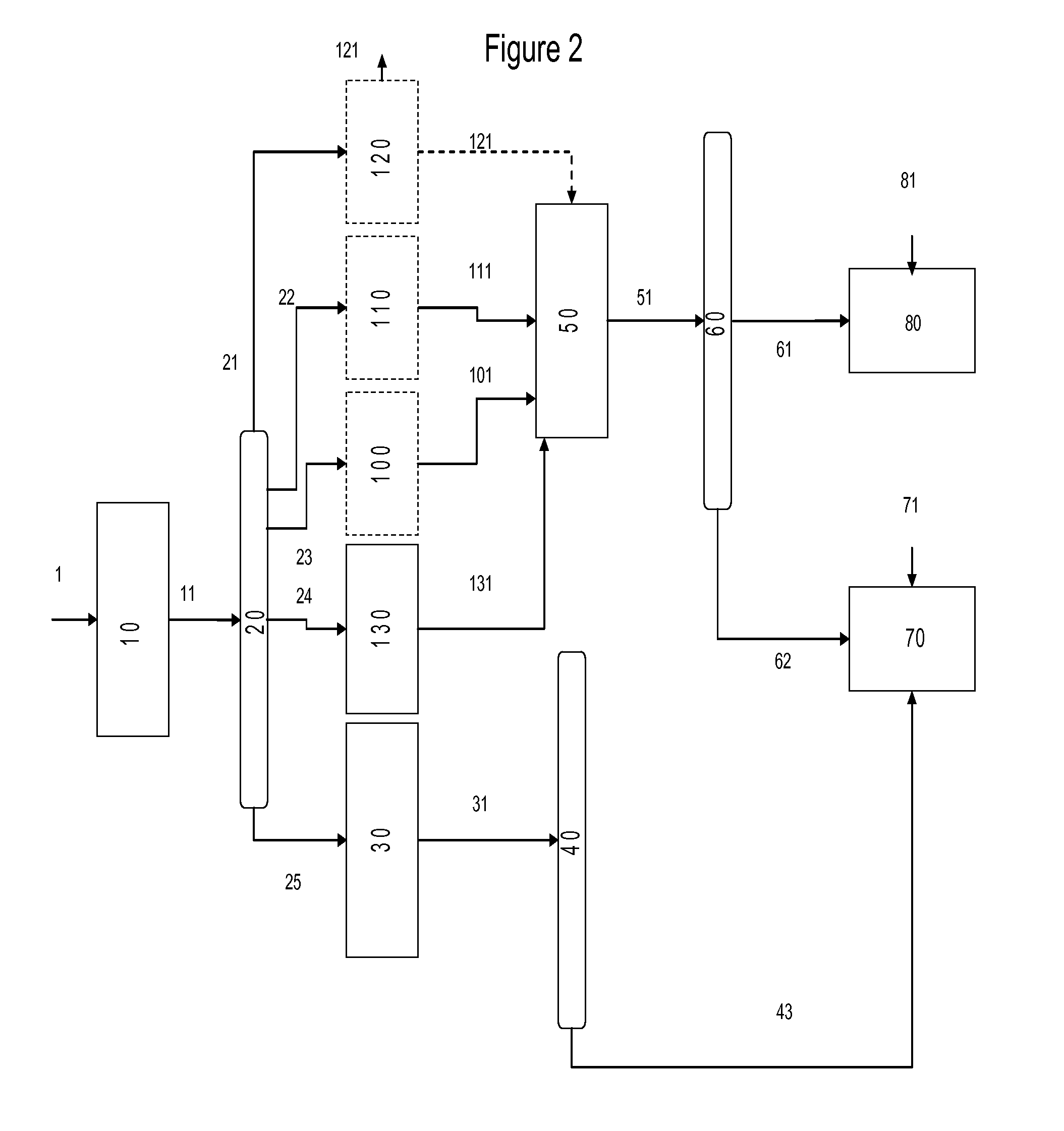Production of distillate blending components
a technology of distillate and components, applied in the direction of organic compounds/hydrides/coordination complexes, physical/chemical process catalysts, thickeners, etc., can solve the problems of high demand for salable transportation fuels, shortage of salable transportation fuels, and less demand for condensa
- Summary
- Abstract
- Description
- Claims
- Application Information
AI Technical Summary
Problems solved by technology
Method used
Image
Examples
Embodiment Construction
Definitions
[0012]Hydrocarbonaceous Feedstocks—Materials comprising H, C and optionally S, N, O and other elements used to manufacture synthesis gas. Examples of assets are natural gas, methane, coal, petroleum, tar sands, oils shale, shale oil, waste plastics, waste tires, municipal waste, derivatives of these and mixtures.
[0013]Synthesis gas (or syngas)—A gaseous mixture containing carbon monoxide (CO) and hydrogen and optionally other components such as water and carbon dioxide. Sulfur and nitrogen and other heteroatom impurities are not desirable since they can poison the downstream Fischer Tropsch process. These impurities can be removed by conventional techniques.
[0014]Syngas Generator: (Generation of syngas is discussed in U.S. Pat. No. 6,992,114, which is incorporated herein by reference.) This is a process or procedure to generate synthesis gas from Hydrocarbonaceous Feedstocks. A syngas generator can be a light hydrocarbon reformer using methane or natural gas as a feedstoc...
PUM
| Property | Measurement | Unit |
|---|---|---|
| Temperature | aaaaa | aaaaa |
| Fraction | aaaaa | aaaaa |
Abstract
Description
Claims
Application Information
 Login to View More
Login to View More - R&D
- Intellectual Property
- Life Sciences
- Materials
- Tech Scout
- Unparalleled Data Quality
- Higher Quality Content
- 60% Fewer Hallucinations
Browse by: Latest US Patents, China's latest patents, Technical Efficacy Thesaurus, Application Domain, Technology Topic, Popular Technical Reports.
© 2025 PatSnap. All rights reserved.Legal|Privacy policy|Modern Slavery Act Transparency Statement|Sitemap|About US| Contact US: help@patsnap.com


